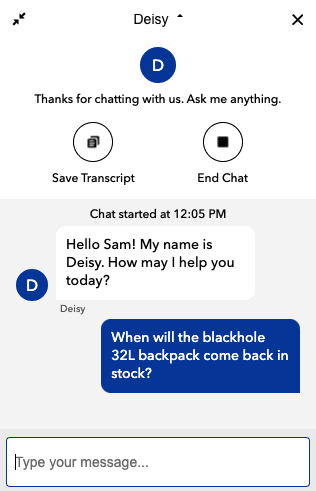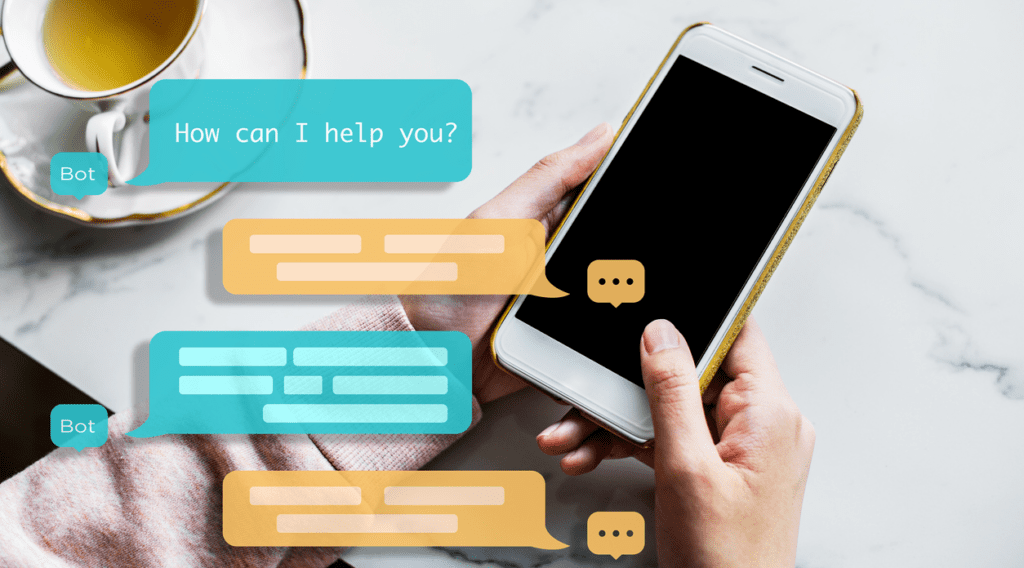The Technology Behind Effective Self-Service
Customers want to use self-service portals, but the experience can be lagging. Get to know the ins and outs to create the ultimate customer experience.

AI-driven chatbots are poised to save industry $8 billion by 2022, which isn’t surprising given that most customers prefer to head to a self-service portal before picking up the phone to talk to a service representative.
But chatbots represent just one component of a comprehensive self-service portal. Immediate and cost-effective service has proven to be impossible through call centers and human chat. Self-service portals are the comprehensive answer to that need for immediacy.
But they need to be done well.
To take a closer look at the technology behind self-service portals, and where that technology is headed, I talked to two experts at Lucidworks. William Tseng is regional director, sales engineering, and Radu Miclaus is director of product, AI, and cloud.
The Evolution of Self-Service Portals
 Online self-service portals have been around since the early ’90s. “It was pretty basic back then,” Tseng says.
Online self-service portals have been around since the early ’90s. “It was pretty basic back then,” Tseng says.
 On early portals, you had to use keywords to try to find what you were looking for. And those first portals couldn’t discern your intent, Miclaus says. For example, were you complaining, or did you just want information?
On early portals, you had to use keywords to try to find what you were looking for. And those first portals couldn’t discern your intent, Miclaus says. For example, were you complaining, or did you just want information?
For their time, though, these self-service systems were actually pretty effective.
“But as times continue to evolve, they need to evolve with them,” Tseng says. Owners of portals wanted to provide more tailored experiences and more relevant results. But older systems couldn’t meet their expectations.
Fast-forward to today: Now self-service portals can do things that users of the first portals couldn’t have imagined.

Keyword search hasn’t totally gone away. It’s still around in self-service portals and probably always will be, Tseng says, because “Google has trained us that way.”
But it’s been joined by a host of other services. Miclaus breaks it down:
- On some self-service portals, you can go through an entire workflow, like opening an account. This is made possible by predefined templates.
- You can seek information by using the search bar or interacting with a chatbot. The big breakthrough here is that you can ask questions using conversational language instead of just typing in a keyword and hoping it returns the results you need.
- A self-service portal can also provide recommendations. This is similar to what Google does when it shows you a list of other questions that are related to the one you just asked. Recommendations expedite customers’ path to the information they need and reduce the effort needed to get there.
Using voice in search could be a “best of both worlds” situation for customers. It allows them to help themselves, as most want to do, while more closely simulating the warmth, immediacy and empathy of a human-to human interaction.
How Machine Learning Powers Self-Service Portals
What enabled this evolution? Advances in technologies such as machine learning.
Speaking very broadly, machine learning means that computer systems can take actions based on understanding patterns in data instead of relying on humans to “tell” them to do something.
Advances in storage and computer processing power began to unleash the power of machine learning to improve self-service portals. Systems now can access the volume of data they need to spot patterns and to use those patterns to provide the answers that customers seek.
In other words, online self-service portals can understand better what we’re looking for and give us answers more quickly and effectively.
So let’s take a closer look at how that happens.

When you ask a question on a self-service portal, machine learning models match that query to probabilistic occurrence in the data set — in other words, it tries to match your question to one that it’s already seen.
This makes it easier for the system to find and show you the most relevant response. And it’s a lot more accurate than keyword search, Miclaus says.
The most up-to-date portals aim to provide a single answer vs. a list of answers for the user to choose from, Tseng says.
“The goal of machine learning is to give them back the right answer — in the first slot,” he says.
Vectors also allow you to quickly compare a user’s question with questions past users have asked, Tseng says.
“We would look for patterns and figure out, ‘OK, people who have asked similar questions also clicked on this answer’,” he says.
The improved ability to understand what we are asking is probably the biggest recent advancement in self-service portals, Miclaus says. They can now figure out what we’re asking whether we use colloquial or formal language. For example, whether you say “What time is it?” or “Could you please tell me the time?”, the portal knows what you mean and delivers the same answer, Miclaus says. AI also can pick up the intent of your query, which affects the answers you receive, he adds.
How to Create (or Improve) Your Portal
So what does all this mean for you if you are creating a self-service portal from scratch or improving an existing portal? In both cases, the answer comes down to making the best use of data, Tseng says.
 Companies that are building a self-service portal for the first time might not have a lot of assets for customers, especially if they are new. They may not have answered a lot of customer questions yet, which, of course, makes it harder to use data to predict the answers to future questions.
Companies that are building a self-service portal for the first time might not have a lot of assets for customers, especially if they are new. They may not have answered a lot of customer questions yet, which, of course, makes it harder to use data to predict the answers to future questions.
However, take what you do have already — such as documentation —and start building a knowledge base. Just realize that, right out of the gate, this knowledge base isn’t going to be able to answer all of your customers’ questions.
The solution? Create a community space where your users can come to ask questions, Tseng says. “Dedicate folks to answering their questions, too.”
And here’s the key step: Log every question and answer. “So many answers get lost in the wind,” Tseng says.
This starts the essential task of collecting data that will help you build and continuously improve your self-service portal. The more questions you receive and answers you provide, the better your self-service process will become, Tseng says.
A lot of that advice also applies if you have an existing self-service portal. The key is still using all of your data, Tseng says. For your self-service portal to have all the cool capabilities that we’ve talked about in this article, all of the data you have collected has to be accessible for machine learning. It’s more than getting your data in one place. It’s what you do with that data.
And self-service portals that don’t deliver a good experience either lack adequate data or aren’t doing enough with it, Miclaus says. Ineffective self-service portals often don’t employ signals: historical information around previous queries. And they may not be using some basic machine learning around synonym detection and misspellings.
The Quest for More Targeted Answers

The technology behind self-service portals continues to evolve to provide more relevant answers and to serve them up faster, Miclaus and Tseng say.
Miclaus says portals are getting better at providing answers with just the information you need — and none that you don’t need. For example, let’s say a self-service portal finds a document in its knowledge center that contains the answer to the question you are asking. Instead of just providing a link to the full document as an answer, the system would instead just show you the portion of the document that’s relevant to your question.
“The nirvana would be to build abstracts of that information,” he says. Using AI to summarize a full document into a paragraph that could then be used to answer questions would be very user-friendly. But identifying the main ideas in a document requires a lot of subtlety from AI, he points out.
How Portals Anticipate Questions

Tseng says that there is another big goal driving improvements in self-service portals: answering a user’s question before they even ask it.
“This is where machine learning comes in,” he says. “It can start comparing that user to other users.”
Here’s what that could look like. User A visits the self-service portal seeking answers about a problem they’re having with updating Product Z. Then User B visits the portal. The system knows that, like User A, User B owns Product Z. And it knows that “if one user is having an issue with the product, there’s potential that another user is having the same problem,” Tseng says. So, when User B arrives at the portal, they could be greeted with a message like “Updating Product Z? Visit our FAQ.”
“It’s looking at users and saying, ‘What do they have in common? What similarities do they have?'” Tseng says. “If they have enough similarities, what actions have all these users with similarities taken? And what action should I present to this user that’s just walked in that’s similar to all the other ones?”
But comparing users isn’t the only way that a portal can answer questions before they are even asked, Tseng says.
As an example, let’s take a company that has just launched a new product or an upgrade to an existing one. It makes sense that the launch will bring users with questions about it to the self-service portal. So all arriving users could be presented with next actions to help them get information about the launch — even if they are first-time visitors that the portal does not yet recognize.
Even using machine learning to understand current trends in the use of the portal can help predict what users will need, Tseng says. If a couple of topics are the “hot” search on the portal at the moment, there’s a decent chance that an arriving user will need information on those topics, too. So the portal could save that user time by presenting options related to current hot searches as soon the user arrives.
Voice Tools and the Future of Self-Service

With the continuing rise of mobile improvements in voice recognition, voice search also will play a big part in the future of self-service portals for both external and internal customer service.
“Full integration with voice and text is happening already,” Miclaus says.
Technology is getting better and better at interpreting the everyday language that you use when you speak a question and turning that into a text query. A self-service system can then use that text query to find relevant information and return an answer quickly.
“People are going to start figuring out how to really answer questions such as ‘How much is X, Y, Z going to cost if I buy it in bulk?'” Tseng says.
At the same time, voice responses are getting more natural and conversational. Miclaus points to the human-like conversational style of Google Assistant as an example of where the technology is going.
Using voice in search could be a “best of both worlds” situation for customers. It allows them to help themselves, as most want to do, while more closely simulating the warmth, immediacy and empathy of a human-to human interaction.
And it gets us closer to what might be the ultimate goal for a self-service portal: Creating a system that users don’t need any kind of special skill set to interact with, Miclaus says.
“Right now we’re flipping the script and saying, ‘I don’t care what machine language is used underneath, I just want to communicate naturally with a system,'” he says “And that is self-service.”
Learn more about how Lucidworks helps customers improve self-service with Smart Answers, a deep learning plugin that makes chatbots better at resolving natural language questions.
LEARN MORE
Contact us today to learn how Lucidworks can help your team create powerful search and discovery applications for your customers and employees.